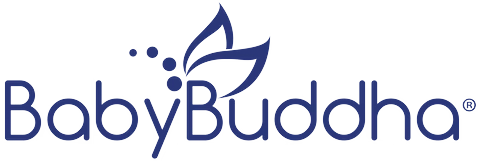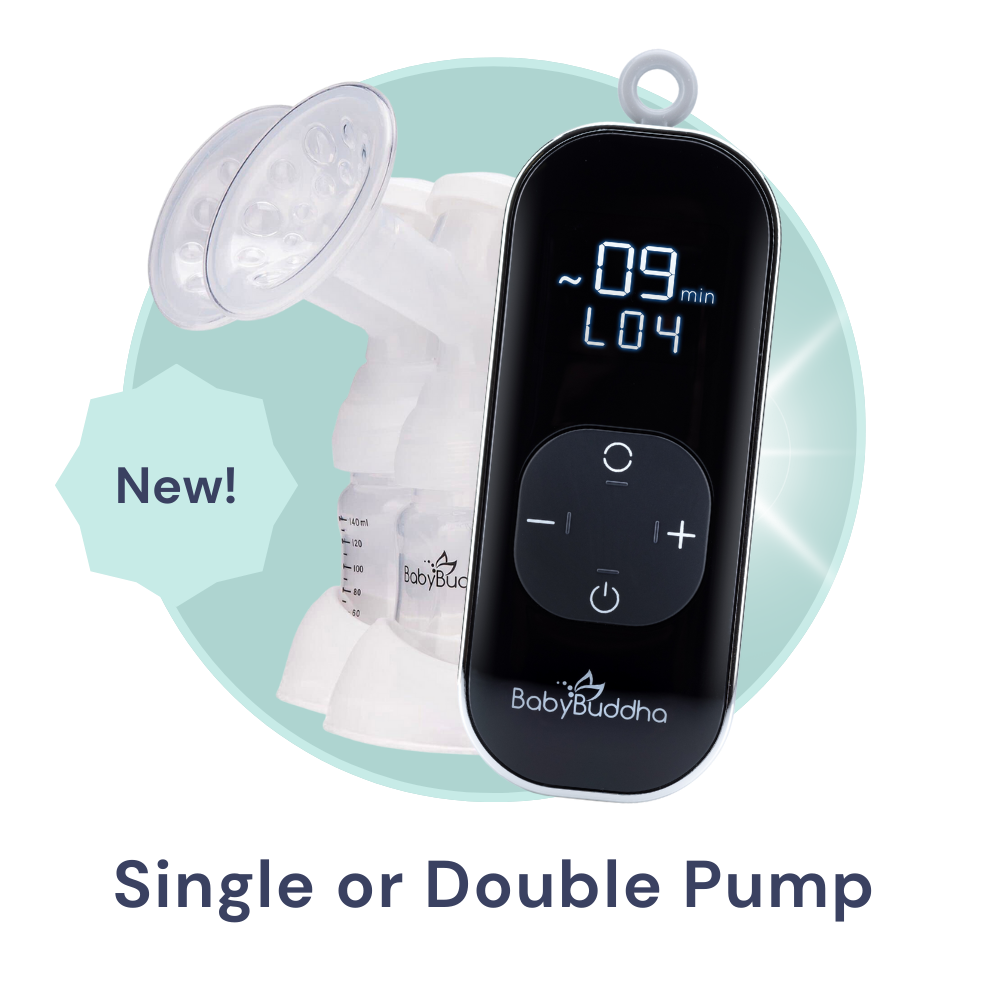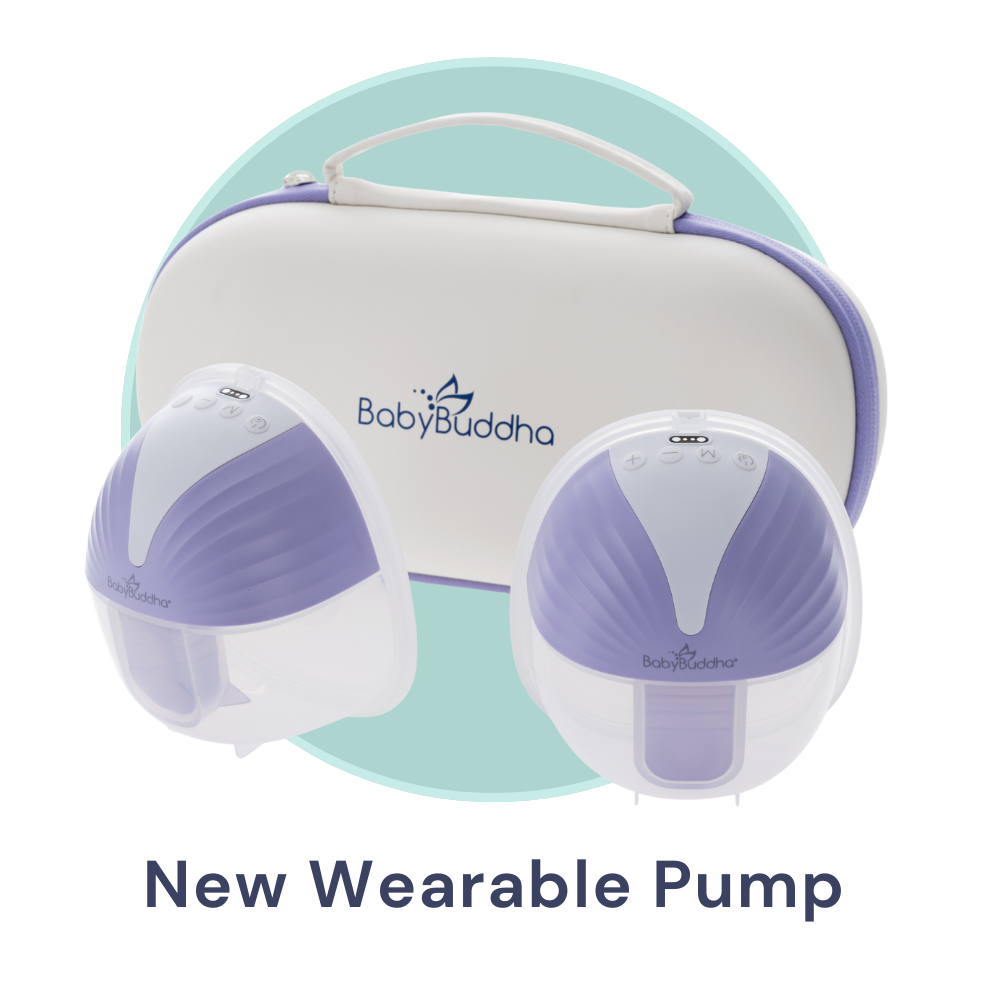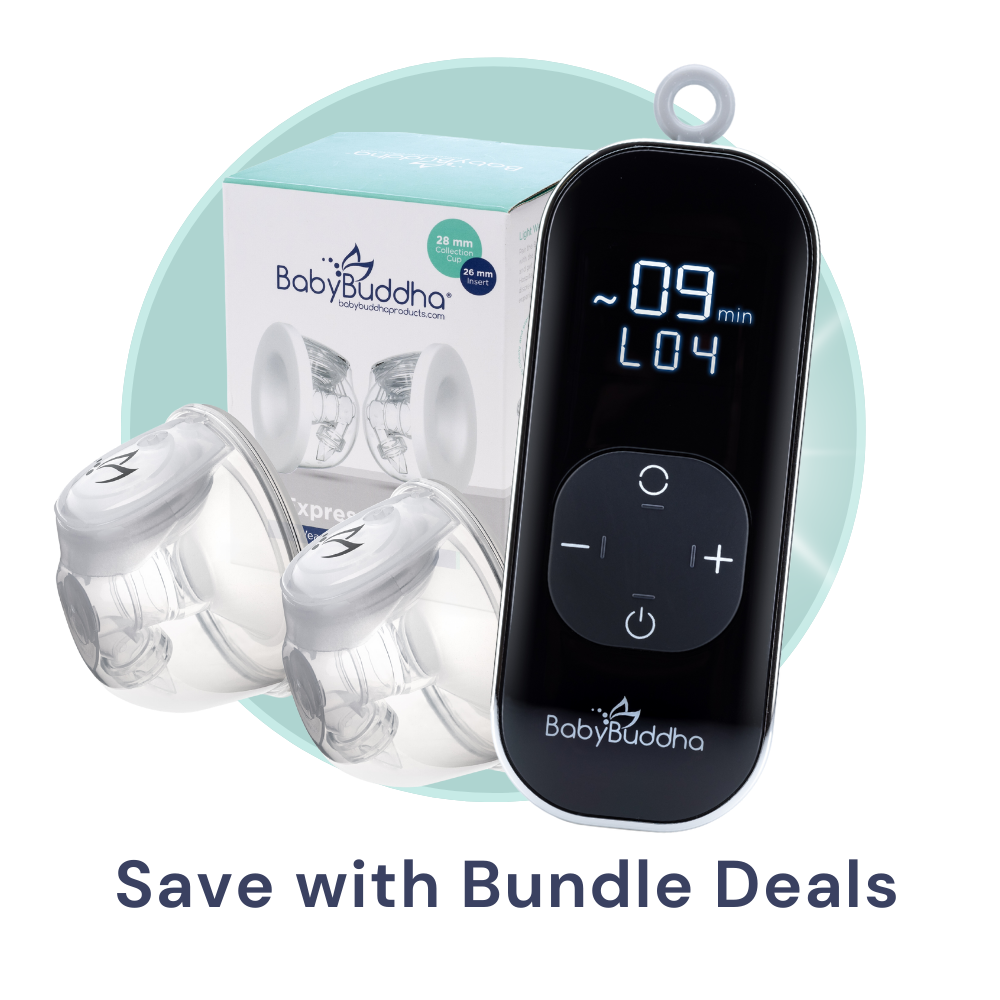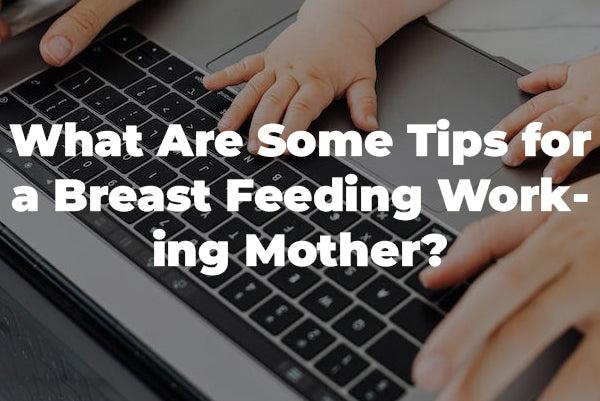Long before a new baby is welcomed into the world, one thing that is usually on the minds of moms everywhere is how they plan to feed their newborn. If you’re a new mom, you might not be sure which option will work best for you and your baby. If this isn’t your first go around with having a little one, remember that every baby is different. What worked for one baby may not work for the next.
There are two main breast milk feeding styles: breastfeeding and pumping. There are, of course, plenty of babies who are fed formula either in addition to breast milk or are solely formula fed. However, if you want your baby to be either fed exclusively breast milk or primarily breast milk, you’ll likely be breastfeeding, pumping, or both.
We’ve Got Your Back
We know that making this decision feels like a big one. We’re here to make it stress-free by providing you with pros, cons, and tips for each of these feeding styles.
That being said, another note is always to remember that you are doing a great job, and you are a great mom! It may take some trial and error to determine what your baby needs and which feeding styles work best for your family. It also doesn’t have to be one or the other; it can be both!
Countless women in our world today breastfeed and pump for one reason or another. Whatever you choose, trust your mama instincts and know that you’re doing what’s best for you.
Now, let’s dive in and look closer at these feeding styles. First up is breastfeeding:
Breastfeeding
For the purpose of this post, when we reference breastfeeding, we are talking about direct breastfeeding or nursing. This means that the baby is brought directly to the breast and receives their breast milk from the mom’s nipple. We specify this because, by definition, pumping and bottle feeding your baby breastmilk is also considered breastfeeding as the baby is still getting breast milk as their main form of nutrition.
Pros of Breastfeeding
Here are some of the positive things about nursing for both you and your baby:
- Many Health Benefits for Mom and Baby. Some primary benefits of breastfeeding for babies include more bonding with mom and high levels of antibodies being received. Some pluses for moms include easier and quicker postpartum healing and reduced risk for further health complications such as breast cancer, ovarian cancer, type-2 diabetes, and high blood pressure.
- Even More Immune Boosting. Don’t get us wrong, the benefits of breast milk are awesome whether your baby gets milk directly from the breast or the bottle. The difference here is that when your baby’s skin and mouth are in direct contact with your skin and breast/nipple, you transfer antibodies directly to their skin and through your human milk. This provides even more immune support for your baby and an added benefit of the breastfeeding relationship. Note that Skin-to-skin contact can be done with all parents, including non-breastfeeding ones — fathers and siblings included!
- Convenience. Mom’s milk is ready anytime and anywhere. No preparation needs to be done, and no bottles need to be filled or mixed; just latch your baby on, and they begin feeding. Wearable, battery-powered Electric Breast Pumps are quiet and discreet, so you can wear them on the go, giving new moms an extra boost of freedom.
- Less to Clean. Along with the convenience of feeding is the convenience of not having any bottles or pump parts to clean after nursing. This makes direct breastfeeding much less of a hassle.
Cons of Breastfeeding
While there are tons of positive things to direct breastfeeding, as with all things in life, there are some downsides too.
Here are some things a mom could encounter as a negative aspect of nursing.
- Highly Demanding Schedule. When exclusively breastfeeding on-demand, you’re essentially at your baby’s beck and call. When they need to eat, you need to feed them. This can happen any number of times a day; anywhere you may be (some moms aren’t comfortable breastfeeding in public), and at any time, day or night. Many moms find this to be the biggest downside to exclusive breastfeeding.
- Mom is the Sole Feeder. An exclusively breastfeeding mom is the only one who can nurse her baby. Many moms say that their partner or caregiver's inability to feed their infant is one of the most challenging things about the fourth trimester and onward.
- Negative Physical Side Effects. Cracked nipples, bleeding nipples, clogged milk ducts, and sore breasts are a few of the potentially painful physical side effects of exclusive breastfeeding. Although some exclusively pumping moms experience these things, exclusive breastfeeding moms tend to find it more challenging to get relief from these discomforts between feedings due to the higher schedule demand.
- Worries About Supply. One thing that often plagues the minds of exclusively breastfeeding moms is their milk supply. Many moms worry if their baby is getting enough milk from their breasts. This isn’t as much of a worry with exclusive pumping.
Tips for Breastfeeding
-
Make it fun. Use your time feeding your little one to catch up on a favorite television show, listen to a podcast, or read a book.
-
If you are a mom who worries about milk production, check out our guide on increasing milk supply.
-
If you start to feel engorged or uncomfortable in between feeding sessions and your baby isn’t ready to eat, try hand expression to relieve pressure or use a manual pump to express milk while waiting for your baby to show hunger cues.
Pumping

Pumping is using a breast pump to express breast milk into a collection container to be bottle-fed to your baby. Let’s look at some pros, cons, and tips for exclusively pumping.
Pros of Pumping
- Your Baby Still Gets Breast Milk. Breast milk is the best and most beneficial food for babies. The American Academy of Pediatrics recommends that breast milk be a baby’s main form of nutrition for their first year. Breastfed babies are at lower risk for certain medical issues in the future. When pumping breast milk for your baby, the best benefit is that they are still receiving all the amazing things breast milk offers.
- Others Can Help. When you are pumping, your partner or another caregiver can take over some of the feeding responsibilities from the mom by giving the baby a bottle. This can often be a big stress relief for some women.
- You Know How Much a Baby is Eating. Another benefit to exclusive pumping that moms often say eases their minds is that you can measure and know exactly how much your baby is eating over 24 hours.
- Less Demanding Schedule. While pumping is still very physically demanding, the schedule is often less demanding. While we recommend creating a pumping schedule that works for you, women typically have fewer pumping sessions than they would nursing sessions.
- You Can Store Breast Milk for Later. An excellent benefit of pumping is the ability to store breast milk for later use in milk storage bags. This is useful to build a stash in your freezer for when you may be away from your baby or for any other reason you may want to have some stocked up. Check out our guide on safely storing breast milk to be totally prepared.
Cons of Pumping
- More Work Before And After Pumping. When you are exclusively pumping, there is a lot more that you have to do in regard to cleaning and sterilizing your pump parts. In addition, you’ll also need to sanitize the baby’s bottles.
- More Expensive. Where nursing is free because you put the baby directly to your breast, there is an added cost with pumping. The biggest cost associated with pumping is usually the pump itself, especially if you opt for an electric pump. The good news is that many healthcare plans now make it possible for you to get a pump through insurance. There are also the costs of bottles, milk storage bags, and other accessories.
- Can Be Very Physically And Mentally Demanding. It’s no secret that pumping isn’t a walk in the park. Like breastfeeding, it can be both very physically and mentally demanding. One thing that takes a mental toll on a lot of moms surrounding pumping is having to be stationary. We solved this by creating a revolutionary, hospital-grade, electric breast pump that gives you your freedom back.
Tips for Pumping

-
Get a good pump. The quality of your pump will make or break your pumping journey. Be sure to get one that has excellent suction to help you achieve maximum let-down and get your milk flowing more freely.
-
Ensure you have the correct size flange. Flange fit is also crucial to a successful pumping journey. The wrong size can cause pain, injure your nipples and decrease your milk supply.
-
Talk with your healthcare provider about when it would be safe for you to start pumping. When it’s safe to start pumping is different for every woman, depending on their specific pregnancy and medical history.
-
Have a weaning plan. You may not want to think of this at the start, but you can’t just stop pumping when your baby reaches 12 months old. This could lead to clogged ducts which are extremely painful, or even mastitis, which can turn into a medical emergency like sepsis.
For Both Breastfeeding and Pumping
- Learn about the
stages of breastmilk. There are three: colostrum, transitional milk, and mature milk. Knowing about each of these stages will help you know how much your baby should be eating in the early stages of your breastfeeding or pumping journey.
-
Check that you’re getting proper hydration and nutrition. This will be crucial to your breastfeeding or pumping success.
Do What’s Best for You
Don’t forget that your feeding journey is unique to you and your baby. Only you will truly know what suits you best! Whether that is exclusive breastfeeding, exclusive pumping, a combination of the two, or even formula feeding, you can do any one of these things or any combination of them.
As a reminder, any tips or tricks found in this blog post are not medical advice. We always recommend that if you have concerns about breastfeeding, pumping, or your baby’s health, you speak with your healthcare provider, your baby’s pediatric provider, or an international board-certified lactation consultant (IBCLC).
Be sure to check out our extensive resource gallery for more information and topics about breastfeeding and pumping!
Sources:
Breastfeeding Benefits | WIC Breastfeeding Support USDA
Breastfeeding: AAP Policy Explained | HealthyChildren.org with The American Academy of Pediatrics
Pumping and Storing Breastmilk | Office on Women’s Health.GOV
A Mother’s Guide to the Fourth Trimester | Columbia University Irving Medical Center
